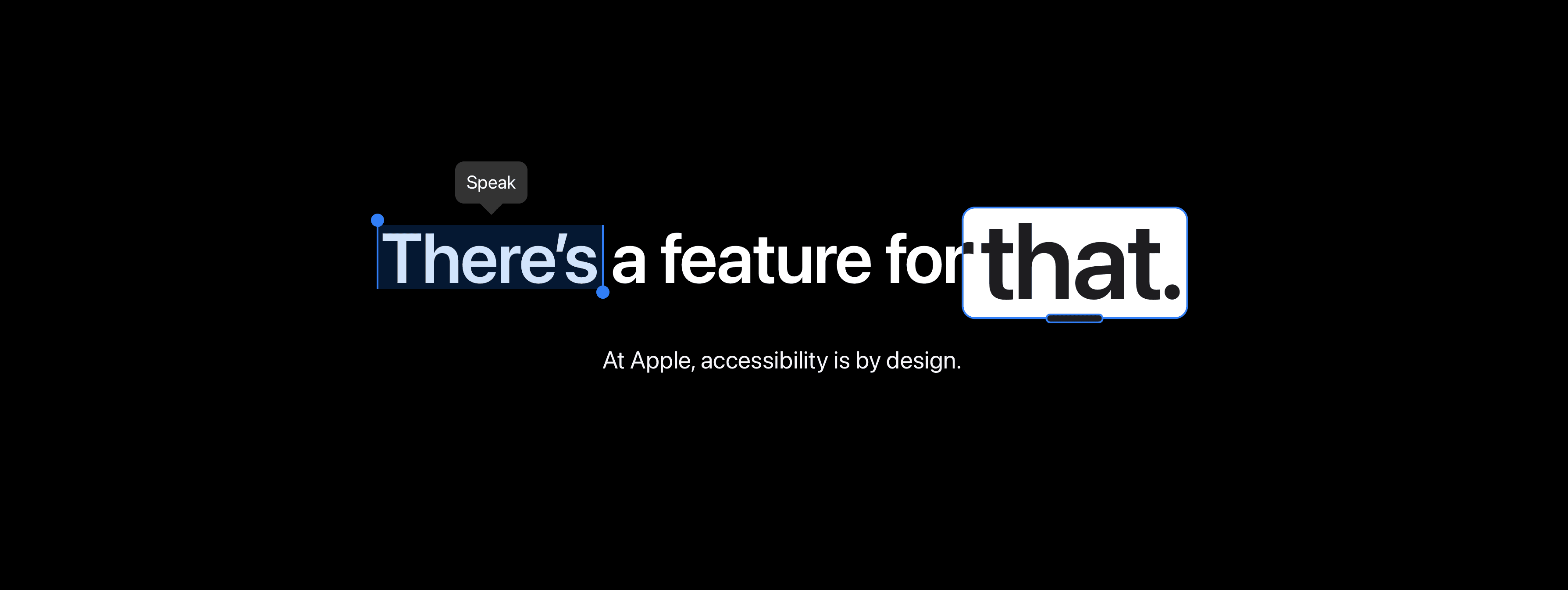IT solutions
Apple's Groundbreaking Accessibility Features for the Visually Impaired
Discover how Apple's innovative accessibility technologies are transforming the lives of people with visual impairments.
16. 5. 2024
Apple's relentless pursuit of technological innovation is not just about pushing boundaries – it's about making those boundaries disappear for everyone. In 2024, Apple's accessibility announcements sent ripples of excitement through the tech world and, more importantly, through the lives of millions of individuals with disabilities. These advancements weren't mere upgrades; they were transformative leaps that redefined what's possible in the realm of digital inclusion.
With the introduction of features like Point and Speak in Magnifier, the once-inaccessible printed world suddenly opened up to those with visual impairments. The ability to simply point a camera at text and have it read aloud with astounding accuracy is a testament to Apple's mastery of artificial intelligence and machine learning.
Voice Control evolved beyond simple commands, becoming a tool for nuanced expression and precise editing. This allows users to craft emails, write essays, or simply communicate with the world using only their voice, with a level of control previously unimaginable.
Eye Tracking transformed the way we interact with devices, offering a hands-free experience that opened doors for individuals with limited mobility. Gazing at the screen became a new form of navigation, making scrolling, selecting, and interacting more intuitive and liberating.
Live Speech and Personal Voice combined to give voice to the voiceless, allowing individuals with speech difficulties to participate fully in conversations and express themselves with their own unique vocal identity. Music Haptics added a new dimension to auditory experiences, letting users feel the rhythm and intensity of music through synchronized vibrations.
But Apple's vision extends beyond 2024. The company's ongoing commitment to accessibility research, collaboration with the disability community, and exploration of emerging technologies like augmented reality and brain-computer interfaces promises a future where technology truly serves everyone, regardless of their abilities.
Apple's 2024 Accessibility Unveiled: A Symphony of Innovation
Point and Speak in Magnifier: Unlocking the World Through AI
Beyond Text: Point and Speak has evolved beyond text recognition. It can now identify and describe objects,products, and even scenes, providing users with a richer understanding of their surroundings.
Multi-Language Support: The feature now supports a wider range of languages, making it accessible to a global audience.
Real-Time Translation: Point and Speak can translate text in real-time, breaking down language barriers and facilitating communication across cultures.
Voice Control: The Power of Personalized Expression
Sound Recognition: Voice Control can now recognize custom sounds, allowing users to trigger specific actions or shortcuts with a unique vocalization.
Emoji Dictation: Express yourself with more flair by dictating emojis using voice commands.
Contextual Awareness: Voice Control is becoming more contextually aware, understanding the intent behind commands and adapting its responses accordingly.
Eye Tracking: Redefining Hands-Free Interaction
Head Tracking: In addition to eye tracking, Apple is exploring head tracking technology, which could provide even more intuitive control for users with limited mobility.
Gaze Detection: This feature can identify when a user is looking at the screen, allowing for automatic adjustments to brightness or font size for optimal comfort.
Accessibility Switch Control: Users can now control various functions with external switches, providing additional flexibility for those with motor impairments.
Live Speech and Personal Voice: Amplifying Authentic Communication
Emotional Expression: Live Speech is being enhanced to convey a wider range of emotions, making communication more nuanced and expressive.
Voice Banking: Users can now "bank" their voice by recording samples that can be used to create a more accurate and personalized synthesized voice if their natural voice changes due to illness or injury.
Real-Time Voice Cloning: Apple is researching real-time voice cloning technology, which could allow users to communicate with their own voice even if they are unable to speak.
Door Detection: A New Dimension of Spatial Awareness
Locating and Identifying Doors: Using the LiDAR scanner on compatible devices, Door Detection helps users locate doors in their environment, identifies the type of door (e.g., push or pull), and even reads signs or labels on the door.
Navigation Assistance: This feature can provide step-by-step guidance to help users navigate to a specific door, enhancing independence and safety.
Apple's Accessibility Ecosystem: More Than Just Features
Apple's commitment to accessibility extends beyond individual features. They have created a comprehensive ecosystem that supports users throughout their journey:
Accessibility Shortcut: A customizable shortcut that provides quick access to frequently used accessibility features.
AssistiveTouch: A customizable onscreen menu that allows users to control their device with simple gestures.
Guided Access: A mode that limits the device to a single app and restricts certain functions, making it ideal for educational or therapeutic settings.
Made for iPhone Hearing Aids: Apple partners with hearing aid manufacturers to create hearing aids that seamlessly integrate with iPhones.
Conclusion
Apple's 2024 accessibility innovations represent a watershed moment in digital inclusion. By pushing the boundaries of technology and prioritizing the needs of individuals with visual impairments, Apple is creating a more equitable and empowering digital landscape for everyone. As technology continues to evolve, we can expect even more groundbreaking advancements from Apple, further blurring the lines between ability and disability.
written by: Matthew Drabek
For our Services, feel free to reach out to us via meeting…
Please share our content for further education


